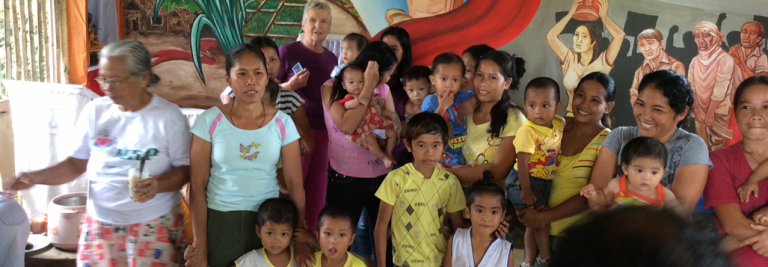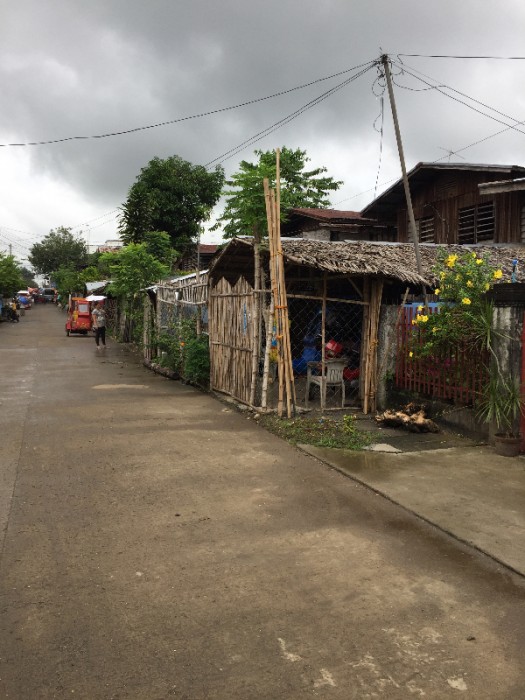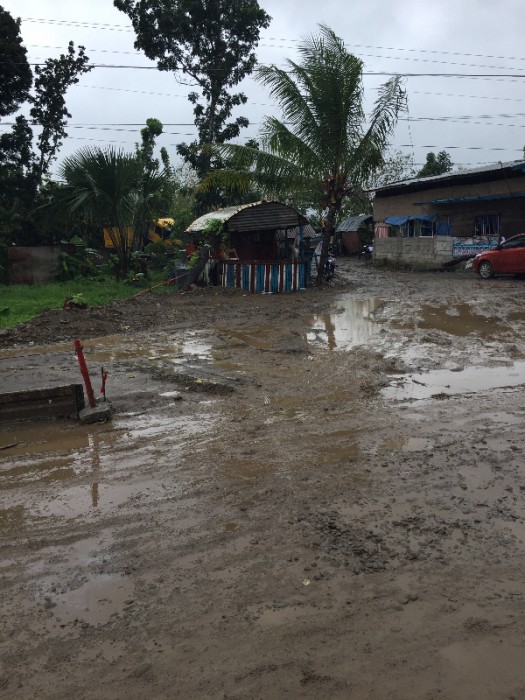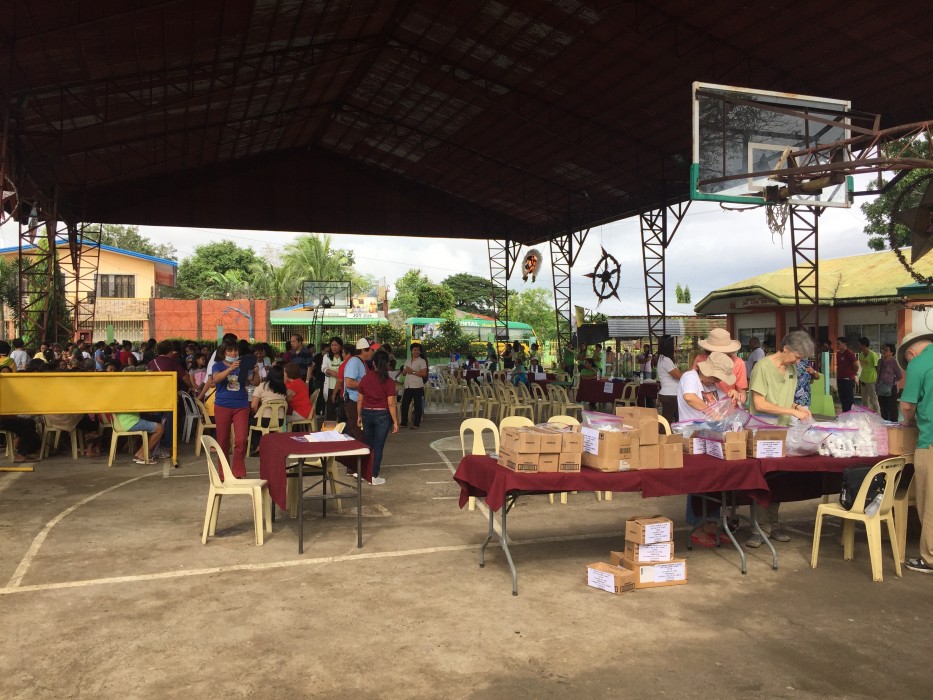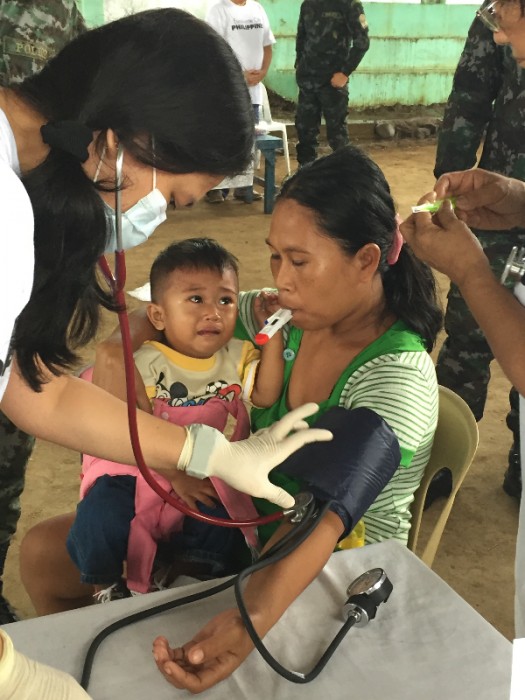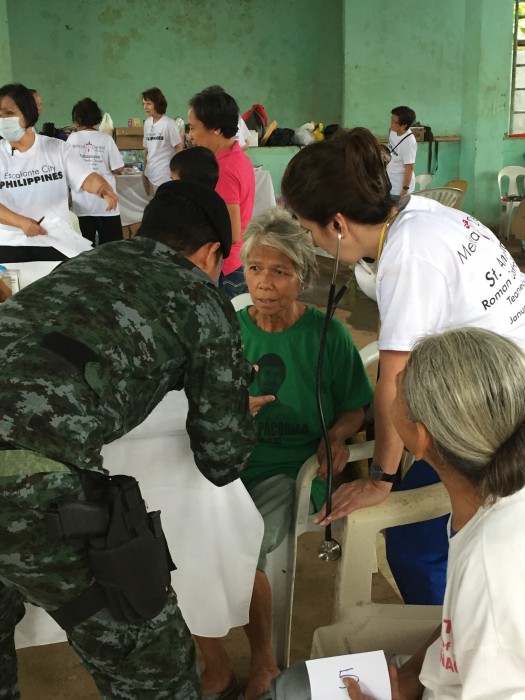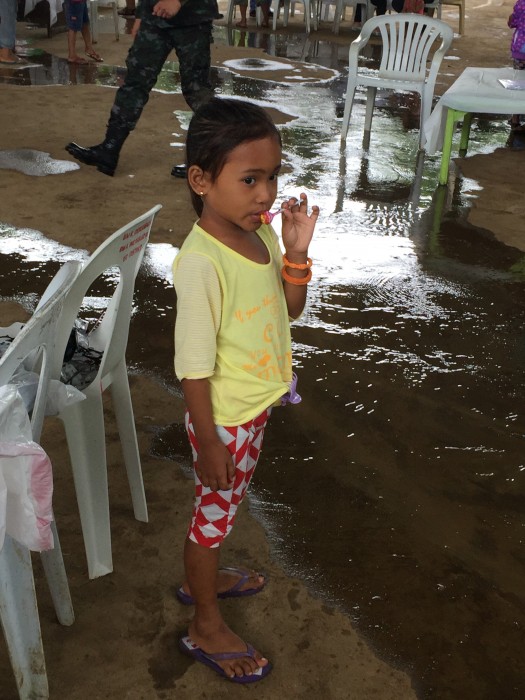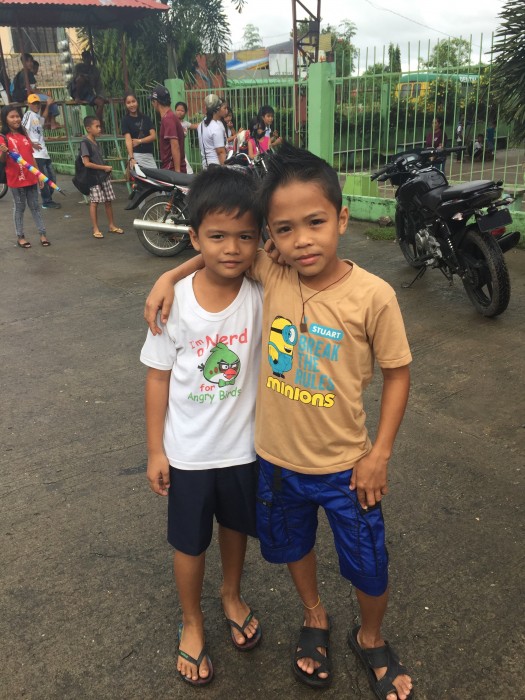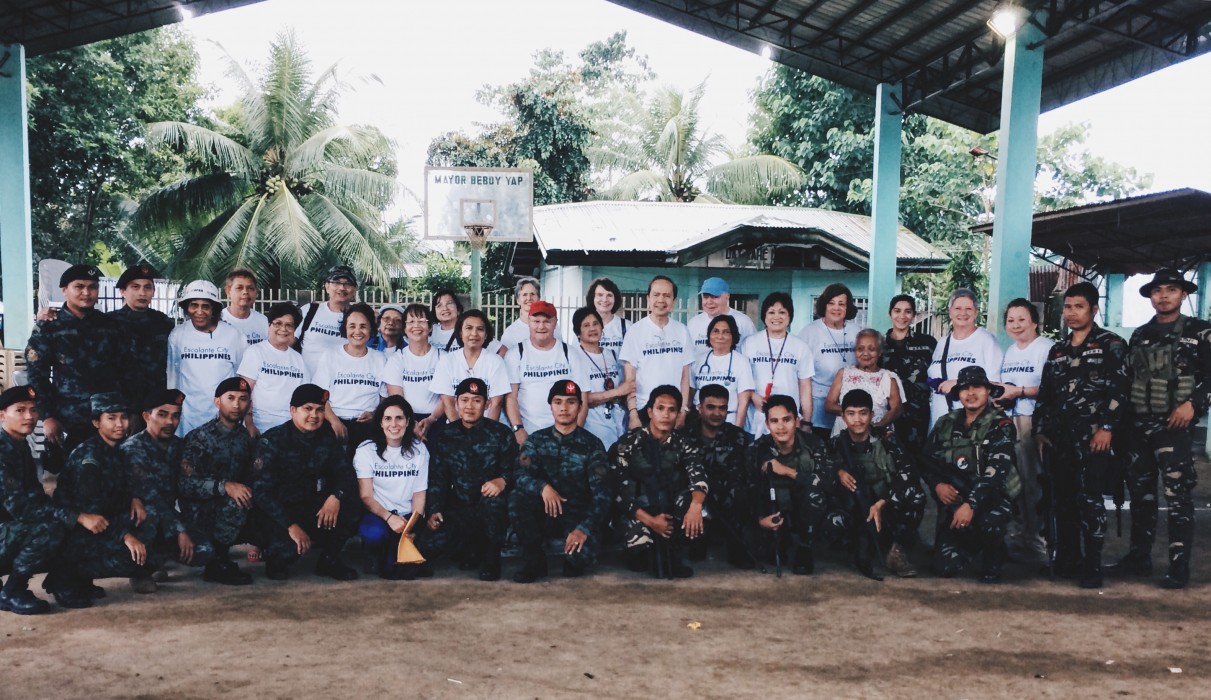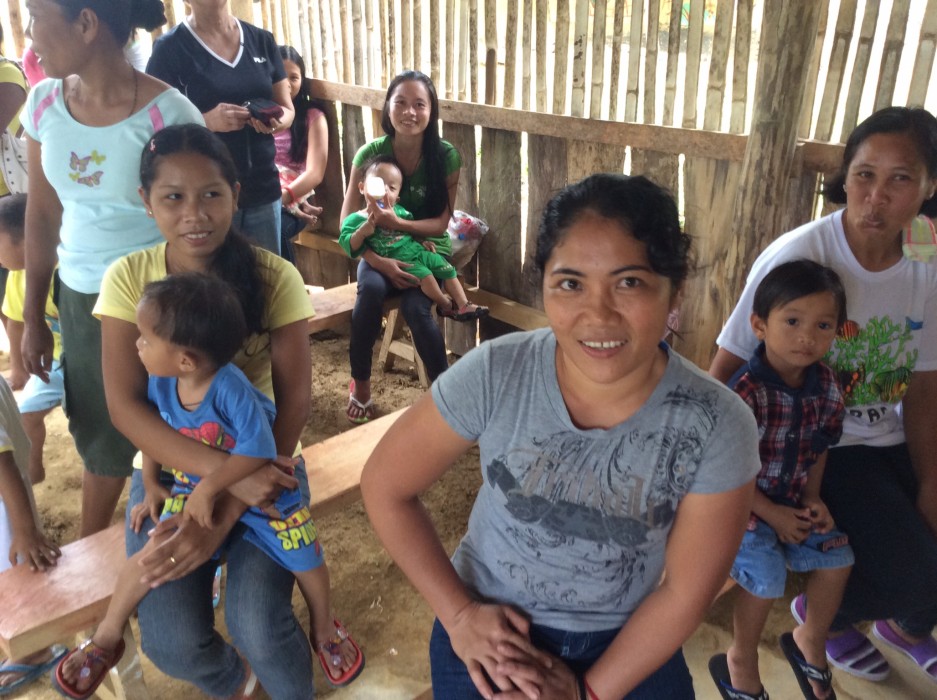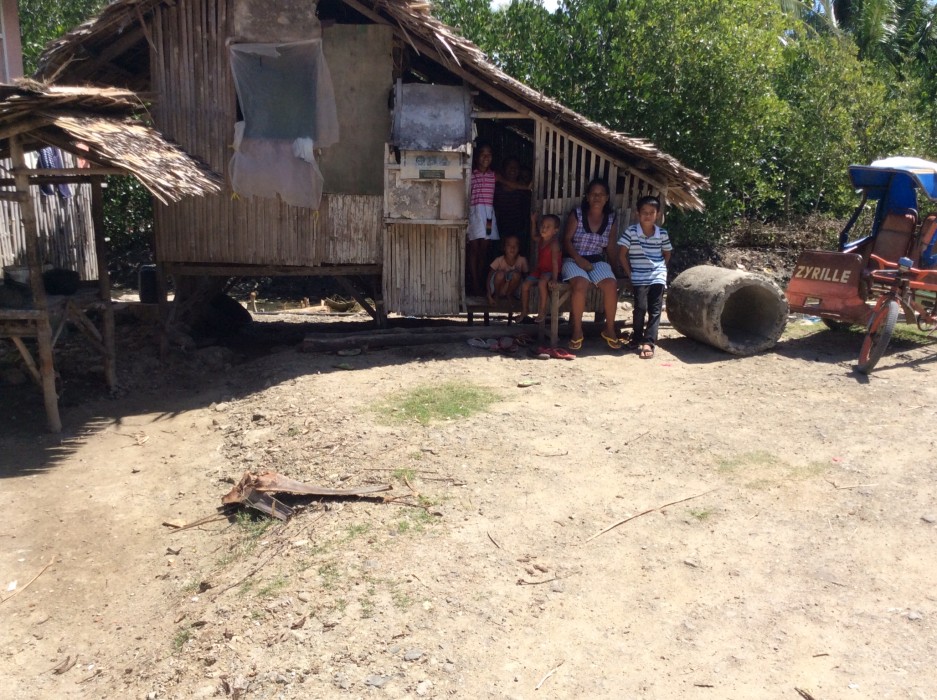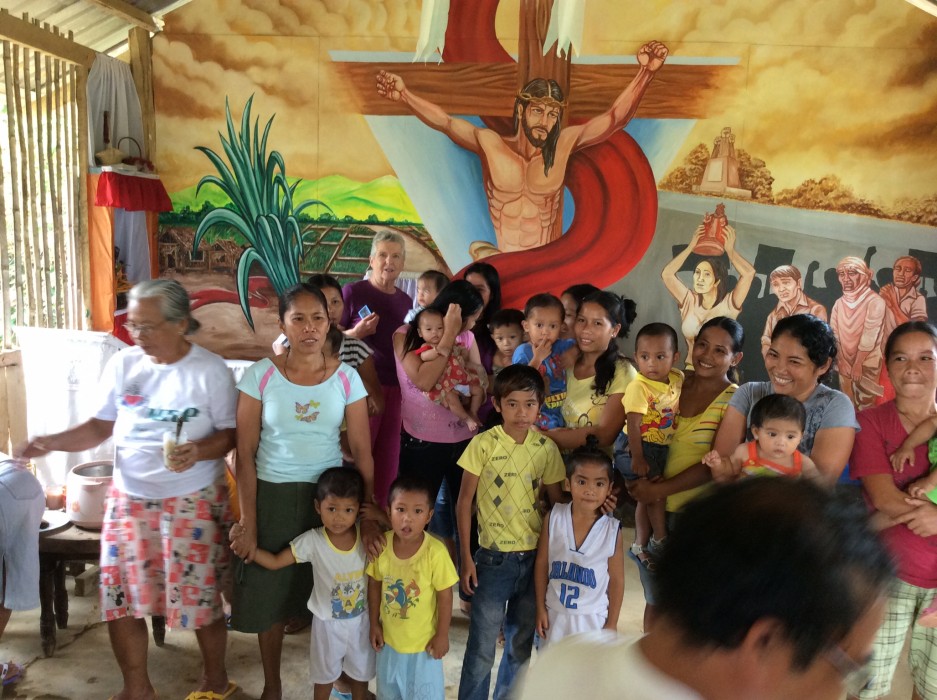[Be sure to look at the three slide shows throughout the report] The medical team that included two internists, four pediatricians including myself, six nurses, one nutritionist and several lay volunteers arrived in Manila on the night of January 6, 2017 after an exhausting 27-hour travel time. The next day, we flew to Escalante City. Our accommodation was at the campus of Mt. Carmel Parish. For the duration of our mission, we started the day by attending a 6 AM Mass followed by breakfast at 7 AM.
Weather was not cooperative because it rained mostly throughout the week. On our first day, we were driven by bus for around one hour through rough and muddy roads to barangay (smallest administrative district) Tamlang, one of the poorest and the farthest mission site. Classes were cancelled because of the typhoon but patients both adults and children were already on line at the basketball court. The city of Escalante provided a new Mobile Dental Unit with two dentists to provide dental care. We saw 218 patients on the first day mostly adults and several children with upper respiratory infections or children whose parents wanted them to get checked.
The rain continued on the second day at the next barangay site called Mabini. We were assisted by several volunteer school children ages 7-10 who carried our boxes of supplies, set up the consultation tables and chairs and also helped us move to avoid getting wet from the leaking roof at the public school gymnasium. We saw a total of 250 patients including children with upper respiratory infections, malnutrition, skin infections. We also distributed reading eyeglasses though we have disappointed many adolescents begging to get one and explained that these were only for adults.
The third day was in the grounds of a church built by a young Filipino Carmelite priest in barangay Rizal. There were several small huts in the area that we used as stations. Rain continued to pour and church grounds were wet and muddy. Since it was a regular school day not too many children came. A total of 311 patients mostly adults were seen that day.
The fourth day was the best day of the mission weather-wise at barangay Alimango. There was no rain and the sun was out. Classes were suspended because of the mission. The school teachers arranged the consultation tables, helped with translations and food preparation. We were also assisted by three local doctors, one obstetrician and two pediatricians. There were local barangay health care workers who notified and spread the word about the medical mission. Their effort paid off because we saw a record of 644 patients.
The fifth and final day was at the college gymnasium of the Mt. Carmel Parish. There were two patients I saw who needed immediate special attention. One was a three-month old male infant who was born with a gradually enlarging mass covered with skin at the nasal bridge. CT scan of the brain done in December in a local hospital in Bacolod, the capital city, confirmed diagnosis of fronto-nasal encephalocoele (brain tissue comes out through a defect in the skull). The parents were told that surgery could only be done when the baby is one year old. In the meantime father asked me if there was something that could be done to decrease the size of the mass or prevent it from getting any bigger.
Another patient is a 13-year old girl with Cyanotic Congenital Heart Disease who because of financial hardship never had any diagnostic cardiac evaluation and who at an early age should have had surgical correction but now remains cyanotic with clubbing of fingers and toes. She constantly looked tired, weak and depressed since she is not able to go out of the house to continue schooling . She requested her Mom to take her to see us hoping we would be able to offer her some medical treatment. I was frustrated that we could not do anything for her at that time.
When we were in Cebu City after the mission, I had dinner with a high school friend who lives in the city and whose husband is the administrator of a multi-specialty hospital and medical school. I brought up the cases of these 2 patients and the husband offered to provide medical and surgical services at the hospital free of charge. We are currently working to get them to Cebu from Escalante.
At the completion of our medical mission, I share the team’s feelings of joy, contentment and happiness for being able to serve the less privileged and underserved community. We witnessed feelings of gratitude and big smiles on the faces of patients who received cough medicines, antibiotics, ointment to those with skin infections, ibuprofen for aches and pains, a month supply of vitamins, bar of soap, toothbrush and excitement among adults who now can read and sew because of new reading glasses.
Belen Fineza-Vinluan, MD
…
I recently joined the Medical-Dental Mission from St. Anastasia’s on a two-week journey to the Philippines. Our group, which consisted of 23 missionaries but only six physicians, spent five days providing care to the residents of the city of Escalante. Escalante has a population of 100,000 people with approximately 70,000 living in poverty. The majority of the residents are farmers or workers on sugar cane plantations making $3 per day. Many have never seen a doctor or if they have, are unable to afford the recommended medications.
Our days began at 5 AM when awakened first by the roosters and then by the beautiful church bells calling us all to worship. After praying as a community, we prepared for our day and boarded our bus. Each day we visited a different location in Escalante.
On arrival, we were always greeted with cheers, great big smiles and very long lines. We saw between 350-600 people per day. The days were long and tiring and unfortunately, the weather created even more challenges. A typhoon passed through on our first day and brought heavy rains for the entire week. The daily rain did not deter or hamper the spirits of the patients. They waited patiently for many hours to spend a few minutes with a physician. Their complaints ranged from simple ailments like rashes and coughs to more serious illnesses like diabetes, tuberculosis and cancer.
After the first day, I was saddened and frustrated with my inability to do what I do with ease everyday in this country: diagnose and treat. This was not feasible with only five minutes per consultation, a stethoscope and a very small selection of medications in the pharmacy. As the week progressed, I was relieved and thankful to gain a new perspective. I met an 87-year-old woman accompanied by her daughter. The daughter reported that her mother suffered with so much pain in her shoulder that she cried most days and nights. After a quick exam, it appeared she most likely had arthritis. I provided her with a large supply of ibuprofen and instructions on heat, massage and strengthening exercises. The mother began to cry, not in pain, but in gratitude and gave me a huge hug and a kiss. I realized then, that even with all of my limitations, if I could manage to help just one person, my presence would make a difference.
For many patients I offered simple treatments like creams or antibiotics but for others I just listened, smiled, provided some medical advice on the importance of follow-up and finally, offered an apology for not being able to do more. No matter what I did or did not do, the response was always the same, “Thank you so much doctor.”
Upon returning home, I needed time to re-adapt, decompress, and process this exhausting yet humbling experience. I am truly grateful to have been part of this team and feel blessed to have had this opportunity.
Thank you for all of your prayers for our safety and for our mission’s success.
Laina DeRose, MD



